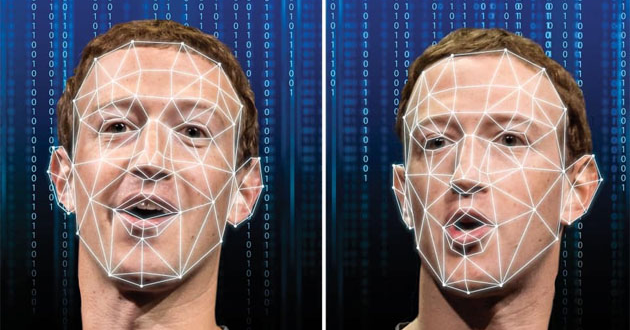The Impact of Deep Fakes on Media and Society
Deep fakes, synthetic media created using artificial intelligence to manipulate or generate audio, images, and video content, have emerged as a significant technological innovation with profound implications for media and society.
This article explores the multifaceted impact of deep fakes, examining their potential for misuse, their influence on public trust, and the ethical and legal challenges they present.
The Technology Behind Deep Fakes

Origins and Development
Deep fakes leverage advancements in artificial intelligence, particularly deep learning and neural networks, to create realistic forgeries.
The term "deep fake" combines "deep learning" and "fake," reflecting the technology's ability to generate highly convincing fake content.
Originally developed for entertainment and research, deep fake technology has rapidly evolved, becoming more accessible and sophisticated.
How Deep Fakes Work
Deep fakes are primarily created using generative adversarial networks (GANs). GANs consist of two neural networks: the generator, which creates fake content, and the discriminator, which evaluates its authenticity.
Through iterative training, the generator improves its ability to produce realistic forgeries, often indistinguishable from real media. This technology can swap faces in videos, synthesize speech, and create entirely fictional scenarios.
The Dark Side of Deep Fakes
Misinformation and Fake News
One of the most concerning aspects of deep fakes is their potential to spread misinformation. Deep fakes can be used to create fabricated videos of public figures making false statements or engaging in inappropriate behavior.
These manipulated videos can be disseminated quickly through social media, influencing public opinion and undermining trust in legitimate news sources. The spread of deep fake content has the potential to escalate political tensions and disrupt democratic processes.
Personal and Psychological Harm
Deep fakes also pose significant risks to individuals' privacy and reputation. Non-consensual deep fake pornography, where individuals' faces are superimposed onto explicit content, has become a disturbing trend.
Victims of such attacks suffer severe emotional distress, reputational damage, and, in some cases, harassment.
The ability to manipulate personal images and videos raises serious ethical and legal concerns, highlighting the need for robust protective measures.
Criminal Activities
Criminals can exploit deep fake technology for various illicit activities, including identity theft, blackmail, and financial fraud.
Deep fakes can be used to impersonate individuals in video calls, gaining unauthorized access to sensitive information or convincing targets to transfer funds.
The increasing sophistication of deep fakes makes it challenging to detect these forgeries, complicating efforts to combat cybercrime.
The Erosion of Public Trust
Undermining Authenticity
Deep fakes erode public trust by blurring the line between real and fake media. As the technology becomes more advanced, it becomes increasingly difficult for individuals to distinguish between authentic and manipulated content.
This uncertainty undermines the credibility of legitimate media and fosters skepticism towards all digital content, regardless of its source.
Impact on Journalism
The proliferation of deep fakes poses a significant challenge for journalists and news organizations. The need to verify the authenticity of media before publication becomes more critical and resource-intensive.
Journalists must develop new skills and tools to identify deep fakes, ensuring the accuracy of their reporting.
This added layer of scrutiny can slow down the news cycle and place additional financial burdens on news organizations already struggling with shrinking budgets.
Trust in Institutions
Deep fakes can also undermine trust in institutions, including governments, law enforcement, and businesses.
Manipulated videos of political leaders or corporate executives can damage reputations, incite public outrage, and disrupt organizational operations.
The erosion of trust in these institutions can have long-lasting societal implications, weakening the fabric of democratic governance and economic stability.
Ethical and Legal Challenges
Ethical Considerations
The ethical implications of deep fakes are complex and multifaceted. On one hand, the technology can be used for creative and benign purposes, such as entertainment and education.
On the other hand, its potential for misuse raises significant ethical concerns. Developers and users of deep fake technology must consider the consequences of their actions, balancing innovation with responsibility.
Ethical guidelines and industry standards are needed to govern the development and use of deep fakes, ensuring they are used in ways that benefit society rather than harm it.
Legal Responses
The legal landscape surrounding deep fakes is still evolving. Legislators and policymakers are grappling with how to address the challenges posed by this technology.
Some countries have introduced laws specifically targeting deep fake content, criminalizing its malicious use and imposing penalties for offenders.
However, the global nature of the internet complicates enforcement, requiring international cooperation and harmonization of legal frameworks.
Detection and Prevention
Efforts to detect and prevent deep fakes are ongoing, with researchers developing advanced algorithms and tools to identify manipulated content. These detection methods rely on analyzing inconsistencies in the media, such as unnatural facial movements, audio-visual mismatches, and digital artifacts. However, as deep fake technology improves, so too must the sophistication of detection techniques. Collaboration between tech companies, governments, and academic institutions is crucial to staying ahead of the curve and mitigating the risks posed by deep fakes.
Conclusion
The impact of deep fakes on media and society is profound and multifaceted. While the technology offers exciting possibilities for creativity and innovation, it also presents significant risks and challenges.
The potential for misuse in spreading misinformation, causing personal harm, and facilitating criminal activities cannot be ignored. Moreover, deep fakes erode public trust in media, journalism, and institutions, posing a threat to the fabric of society.
Addressing the ethical and legal challenges posed by deep fakes requires a multifaceted approach, involving technological advancements, legislative measures, and public awareness.
By fostering collaboration and establishing robust guidelines, society can harness the benefits of deep fake technology while minimizing its risks. The future of media and society will depend on our ability to navigate these challenges responsibly and ethically.
References
- Understanding Its Implications, Ethics & Mitigation Plan
- The Dark Side of Deep Fakes
- Misinformation disinformation and deep fakes
- Facing the Facade – Legal challenges in the age of deepfakes








































